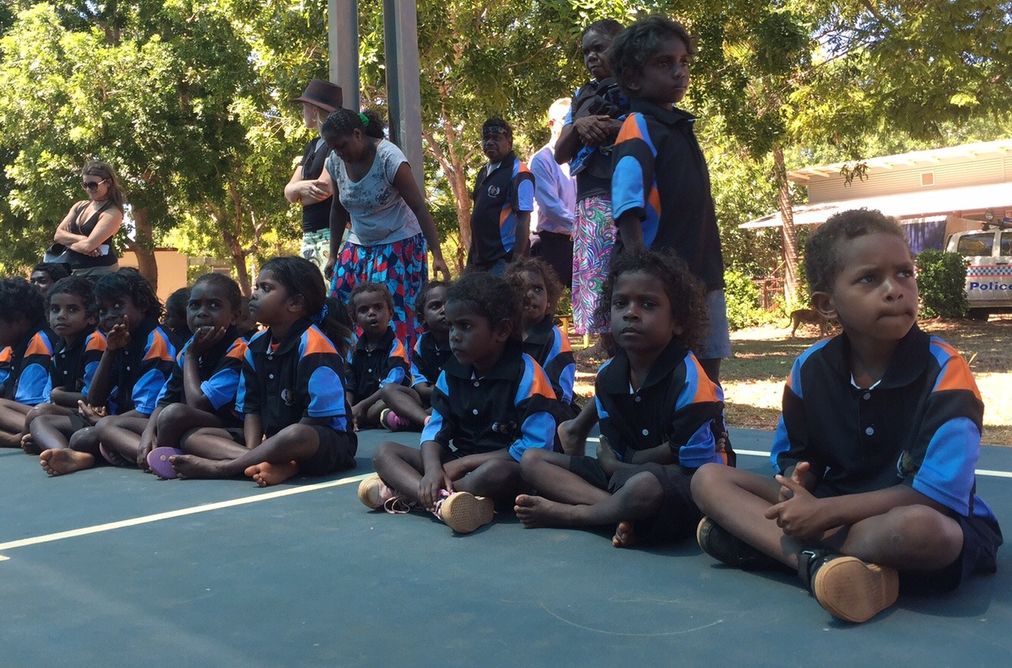
Much attention in Australian Indigenous education is paid to the “achievement gap” and not nearly enough is paid to the “opportunity to learn gap” – this refers to the subject content students are exposed to in school.
Debates focusing on the achievement gap, where in 2014 only 59 percent of Indigenous students complete Year 12 or equivalent compared with 85% percent of their non-Indigenous counterparts, tend to place an emphasis on contextual factors such as the role of poverty or socioeconomic status as an explanation of lower educational achievement.
In the wider public, this can spiral quickly into blaming students and families, or gives schools and teachers permission to find some comfort in the status quo.
Stop focusing on ‘the problem’
Focusing on the opportunity to learn gap removes the emphasis from locating “the problem” in the person (or family or culture), and turns our attention to the accummulated differences in access to key educational resources. These include:
-
quality teachers that can adapt to context
-
personalised academic programs and guidance systems
-
high quality curriculum opportunities, such as being supported to become proficient in rigorous curriculum content (for example, advanced mathematics)
-
high quality educational materials, such as up-to-date technologies and good connectivity
-
good informational sources that support learning at school and home.
These inequalities for Aboriginal and Torres Strait Islander students have compounded over the years and, as such, many have been denied access to quality education. You could argue that this is a form of institutionally sanctioned discrimination.
What is ‘opportunity to learn’?
Students’ ability to learn a subject is based on whether, and for how long, they are exposed to it in school – as well as the adequacy and effectiveness of their engagement in the learning process.
OECD research has shown that the opportunity to learn is connected with student achievement in multiple ways. It is a complex idea that involves both school systems and classrooms.
At the systems level, opportunity to learn plays out through whether students are able to attend school and what is available in the way of curriculum, teaching staff stability, teaching quality, tracking practices, and school resources.
At the classroom level, it involves resources and teaching practices. The educational resources at both of these levels have failed to help Indigenous students improve their knowledge and skills, contributing to poor educational outcomes.
Many Indigenous students, even those who are achieving some success, do not have adequate support to engage with a rigorous curriculum.
What impact can this have on learning?
Research carried out in New Zealand secondary schools has shown that, in relation to literacy, Māori (Indigenous) and ethnic minority students are exposed to different and a narrower range of texts.
An implication of this is that they are only able to complete a narrow part of the assessed curriculum compared to their peers in other schools.
The quality of the texts students read were lower, with students being given shorter texts and ones targeted at youth rather than adult readers.
As a result, students were found to be diverted into a low track curriculum with limited exposure to the content necessary to enter higher education. Teaching approaches were observed to be highly structured and teacher directed.
Some districts and schools in California have gone further and proposed standards and measures around opportunity to learn to ascertain true outcomes for students.
Examples of measures include whether or not students have access to qualified teachers, access to advanced classes and the amount of time spent with the subject matter, and whether the teachers have the knowledge and training to be effective in the context they are teaching.
These sorts of measures would give governments a truer picture of the distribution of resources in education and enable them to make decisions that are more equitable.
Students would benefit from a more equitable distribution of resources and there would be greater transparency in learning progress against performance standards.
Something needs to change
It is not enough to wring our hands when successive OECD reports and National Assessment Program – Literacy and Numeracy (NAPLAN) results emerge showing Australian Indigenous students have made little, or very uneven, progress.
Something needs to change.
We need to understand there are opportunity costs associated with poor educational outcomes for Australian Indigenous students.
The greatest cost is borne by students through low achievement. But they are also by the school in the provision of remedial interventions, retention rates, repeated years, special education, and disciplinary problems that are often tied to school failure.
Society further bears the cost of students dropping out, incarceration, and low productivity in the workforce.
In the case of Aboriginal and Torres Strait Islander peoples, it is a cost borne by successive generations – and hence the community as a whole.
Opportunity to learn is not the panacea of what is not working in Australian Indigenous education. Achievement gap data is a poor guide for policy to improve Aboriginal and Torres Strait Islander education.
We need more comprehensive data that scrutinises schools and their practices, including what occurs in the classrooms.
One key data strategy to bring about change is to use it to create a culture of inquiry in our schools. We must have a willingness to ask questions and not be afraid of the answers.
Where is our school at with Indigenous students? Why are we there? And what needs to change to improve achievement? Continuous monitoring must also become part of the school culture to evaluate if the changes are appropriate and contributing to raising achievement.
Data also helps to build dissatisfaction with current practices when they are manifested in low expectations, low-level curricula, and low-level instructional strategies.
It will also help a good school leader bring their staff, students and community together to create a platform for a shared vision and plan. We need to ensure everyone gets plenty of opportunities to be involved with the data collection, analysis and use, and then change will be inevitable.
![]() This piece was written by Professor of Indigenous Education, University of Melbourne. The article was originally published on The Conversation.
This piece was written by Professor of Indigenous Education, University of Melbourne. The article was originally published on The Conversation.







